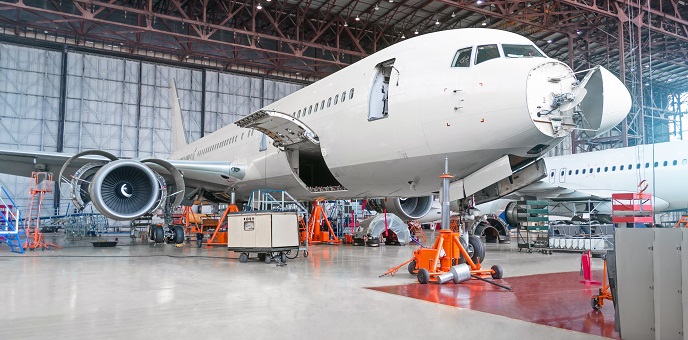Certain Parts will require special attention due to the size for example Aircraft Landing Gears and Engines. To ensure adequate inspection techniques are followed the following should be included.
a) Written procedures?
b) Internal quality audit procedures?
c) Signature procedures?
d) Procedures for checking for physical damage and defects?
e) Preservation procedures?
f) Procedures for quantities received controls?
g) Verification procedures for part/model/serial numbers?
h) Documentation matches part(s)/material(s) received?
i) Storage area for serviceable parts/materials?
j) Is batch segregation maintained to assure traceability to the part/material producer?
k) Procedures for keeping parts/materials with original packaging?
l) Storage area for unserviceable parts/materials?
m) Procedures to identify serviceable parts from unserviceable parts?
n) Serviceable parts area secured to prevent unauthorized cannibalizing of components?
o) System to assure proper control of shelf life-limited parts/materials?
p) Reference system for determining status of ADs?
q) System to control inspection stamps, if used?
r) Segregation maintained for requiring additional testing, i.e., flammability?
s) Flammable, toxic, or volatile material procedures for storage, receiving, and appropriate packaging?
t) Procedures for verifying all required plugs and caps, etc., are installed?
u) Shipping container and packaging appropriate for items received?
Review the following document – “Guide for Developing an Inspection System for Aircraft Parts and Materials Federal Aviation Authority (FAA) Advisory Circular (AC) No 20-154“.
The Advisory Circular focuses on the importance of ensuring competence in the workplace through effective training.
Training of all receiving and inspection personnel is to ensure personnel have a thorough understanding of the receiving inspection system.
The training syllabus should include as a minimum recognition in part identification, determining the current status of the part, conformance determination of the part, regulatory compliance requirements, inspection procedures, handling, storage, ordering procedures, bench or functional testing, and recordkeeping requirements.
All training should be documented and personnel training records established and maintained during the period of employment.
Recurrent training should be implemented for familiarization of practices and any changes to procedures, regulations, or policies.
The Receiving Inspector should be familiar with the following technical information sources related to the incoming material.
Detailed guidance should include a focus on the following:
Technical Data. Ensure currency, applicability, and adequacy for making proper evaluations. A procedure should be established to ensure that technical data is current in accordance with the regulations or manufacturer’s recommendations. This includes, but is not limited to, data such as:
(1) TCDSs;
(2) Airworthiness Directives (AD);
(3) U.S. or industry specifications;
(4) Illustrated parts lists or catalogues;
(5) Maintenance and/or overhaul manuals;
(6) SRMs;
(7) SBs/Service Letters (SL), or other manufacturer’s technical information;
(8) Parts markings;
(9) Engineering drawings;
(10) Maintenance records/return to service;
(11) Other applicable data for making an airworthiness determination, etc.;
(12) Federal aviation regulations; and
(13) AC guidance.
Sofema Aviation Services and our sister company www.sofemaonline.com provide classroom and online training for regulatory and vocational training fully compliant with EASA requirements. For any questions or request please email team@sassofia.com or online@sassofia.com





